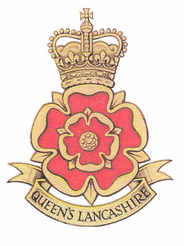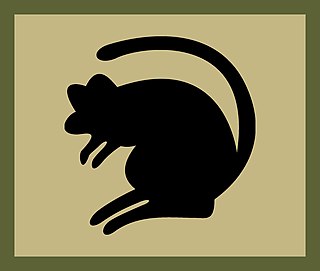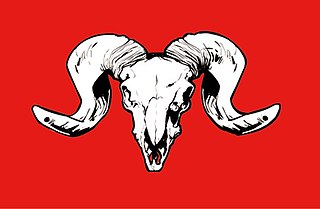Options for Change was a restructuring of the British Armed Forces in summer 1990 after the end of the Cold War.
The 2003 Defence White Paper, titled Delivering Security in a Changing World, set out the future structure of the British military, and was preceded by the 1998 Strategic Defence Review (SDR) and the 2002 SDR New Chapter, which responded to the immediate challenges to security in the aftermath of the September 11 attacks in 2001. Published under the then Secretary of State for Defence, Geoff Hoon, the report effectively introduced a series of cutbacks to core equipment and manpower and the scaling back of a series of future capital procurement projects. This was justified due to the implementation of a policy termed Network Enabled Capability. The review also outlined a major restructuring and consolidation of British Army Infantry regiments.

The Lancashire Infantry Museum, formerly known as the Queen's Lancashire Regiment Museum, is located at Fulwood Barracks in Preston, Lancashire, England. The museum claims to be "largest Regimental archive and the premier centre for military historical research in the North of England."

The Queen's Lancashire Regiment (QLR) was an infantry regiment of the British Army, part of the King's Division. It was formed on 25 March 1970 at Connaught Barracks in Dover through the amalgamation of the two remaining Lancashire infantry regiments, the Lancashire Regiment and the Loyal Regiment. In July 2006 the regiment was amalgamated with two other Northern infantry regiments to form the Duke of Lancaster's Regiment.

The Duke of Lancaster's Regiment (LANCS) is an infantry regiment of the line within the British Army, part of the King's Division. Headquartered in Preston, it recruits throughout the North West of England. The title of Duke of Lancaster merged with the Crown on the accession of Henry V in 1413 and remains dormant, subject to any future revival. Customarily, however, the Sovereign is referred to as the Duke of Lancaster within Lancashire and in relation to the Duchy of Lancaster, and is the regiment's Colonel in Chief. The Duke of Lancaster's Regiment is the county regiment for Cumbria, Lancashire, Greater Manchester, Merseyside and the Isle of Man, and as such, recruits mainly from these areas.

The King's Own Royal Border Regiment was an infantry regiment of the British Army in existence from 1959 until 2006, and was part of the King's Division. It was formed at Barnard Castle on 1 October 1959 through the amalgamation of the King's Own Royal Regiment (Lancaster) and the Border Regiment.
The Lancastrian and Cumbrian Volunteers was a Territorial Army unit of the British Army.

The King's Division is a British Army command, training and administrative apparatus designated for infantry regiments in the North of England.
The King's and Cheshire Regiment was a regiment of the British Territorial Army, with headquarters in Warrington, Cheshire.

4th Light Brigade Combat Team, previously known as 4th Infantry Brigade and Headquarters North East, and before that as 4th Mechanized Brigade and before that 4th Armoured Brigade is a brigade formation of the British Army, currently based in Catterick, North Yorkshire as part of 1st Division. The brigade, now known as the 'Black Rats', was formed in 1939 and fought in the Second World War in the Western Desert Campaign in North Africa. The Black Rats were subsequently involved in the invasion of Sicily and fighting in Italy before taking part in the Battle of Normandy and the advance through Belgium, Holland and into Germany.

The 11th Security Force Assistance Brigade is a brigade of the British Army which is intended to train and assist foreign forces. In 2021, under the Future Army changes, the brigade was redesignated, formerly being the 11th Infantry Brigade & HQ South East. Prior to the Army 2020 changes in 2013, the brigade was temporarily activated for deployment to Afghanistan. Originally formed in the Second Boer War, the brigade was engaged during both World Wars.

The 42nd Infantry Brigade, also known as 42 Brigade, was a brigade of the British Army.

The Loyal Regiment (North Lancashire) (until 1921 known as the Loyal North Lancashire Regiment) was a line infantry regiment of the British Army that was in existence from 1881 to 1970. In 1970, the regiment was amalgamated with the Lancashire Regiment to form the Queen's Lancashire Regiment which was, in 2006, amalgamated with the King's Own Royal Border Regiment and the King's Regiment (Liverpool and Manchester) to form the Duke of Lancaster Regiment (King's, Lancashire and Border).

Fulwood Barracks is a military installation at Fulwood in Preston, Lancashire, England. It is set to close in 2030.

The 1st Artillery Brigade was a support formation of the British Army from 1961-77 and from 1997. Part of the 3rd Division, it oversaw all army close support artillery and deep fires units. Under the Future Soldier programme, the brigade merged with 1st Armoured Infantry Brigade to form 1st Deep Reconnaissance Strike Brigade Combat Team.

The Castle Armoury is a military installation in Bury, Greater Manchester, England.
The following is a hierarchical outline for the structure of the British Army in 1989. The most authoritative source for this type of information available is Ministry of Defence, Master Order of Battle, and United Kingdom Land Forces, HQ UKLF, UKLF ORBAT Review Action Plan, HQ UKLF, 1990.
The Lancastrian Volunteers was a short lived Territorial Army infantry regiment of the British Army, composed of companies from the North West affiliated regiments.

Headquarters North West is a regional command based in North West England. The command administers the reserve units based in its area and also provides the military support HQ for the police and civilian population in the area. The units under its control are The Duke of Lancaster's Regiment, The Mercian Regiment, and the Royal Army Medical Corps and 2,600 Army Reserves from almost all services. The command also controls over 7,500 army cadets.














